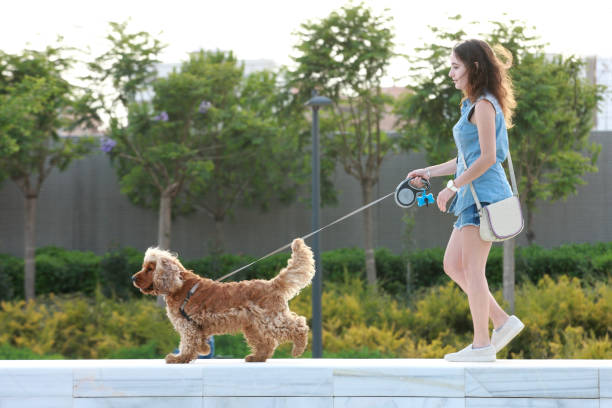Effective Pet Training
Effective Training Techniques for All Pets and Behaviors
Training your pet effectively requires understanding their unique needs and applying techniques that work best for their species and individual temperament. Whether you’re training a dog, cat, or other types of pets, certain techniques can help in achieving desirable behaviors and strengthening the bond between you and your pet. Here’s a comprehensive guide to effective training techniques that can be applied to various pets and behaviors.
1. Positive Reinforcement
Overview: Positive reinforcement involves rewarding your pet for desirable behaviors to encourage their repetition. This technique focuses on reinforcing what you want to see more of, rather than punishing unwanted behaviors.
How to Implement:
- Rewards: Use treats, praise, or toys to reward your pet immediately after they exhibit the desired behavior.
- Consistency: Apply the same rewards for the same behaviors to reinforce learning.
- Variety: Keep rewards varied to maintain your pet’s interest.
Best For: Dogs, cats, birds, and small mammals.
2. Clicker Training
Overview: Clicker training is a form of positive reinforcement where a clicker is used to mark the exact moment a pet performs the desired behavior, followed by a reward.
How to Implement:
- Introduce the Clicker: Pair the sound of the clicker with a treat to create a positive association.
- Mark the Behavior: Click the moment your pet performs the desired action, then immediately reward.
- Practice Regularly: Use the clicker consistently to reinforce specific behaviors.
Best For: Dogs, cats, birds, and small mammals.
3. Lure and Reward
Overview: Lure and reward training involves using a treat or toy to guide your pet into performing a desired behavior, followed by immediate reward.
How to Implement:
- Use a Lure: Hold a treat or toy in front of your pet’s nose and guide them into the desired position or action.
- Reward: As soon as your pet follows the lure, reward them with the treat or toy.
- Gradual Steps: Break down complex behaviors into smaller steps and use the lure for each step.
Best For: Dogs, cats, and small mammals.
4. Model-Rival Training
Overview: Model-rival training uses another person or a trained pet as a model to demonstrate desired behaviors. The model’s actions and rewards provide a clear example for the pet.
How to Implement:
- Choose a Model: Use a person or another pet who performs the desired behavior.
- Demonstrate: Have the model demonstrate the behavior and receive rewards.
- Encourage Imitation: Guide your pet to imitate the model’s actions and reward them.
Best For: Dogs, cats, and birds.
5. Clicker-Free Training
Overview: For those who prefer not to use clickers, clicker-free training relies on verbal cues and treats to mark and reward desired behaviors.
How to Implement:
- Verbal Markers: Use consistent verbal cues like “Yes!” or “Good!” to mark the behavior.
- Immediate Reward: Follow the verbal marker with a treat or praise.
- Practice: Reinforce behaviors with regular training sessions.
Best For: Dogs, cats, and small mammals.
6. Crate Training
Overview: Crate training helps pets feel secure in their own space and is useful for housebreaking and managing behavior.
How to Implement:
- Introduce the Crate: Make the crate inviting with comfortable bedding and toys.
- Positive Association: Feed your pet their meals in the crate or use treats to create a positive association.
- Gradual Increase: Start with short periods and gradually increase crate time as your pet becomes comfortable.
Best For: Dogs and small mammals.
7. Socialization
Overview: Socialization involves exposing your pet to various people, animals, and environments to help them become well-adjusted and confident.
How to Implement:
- Controlled Exposure: Introduce your pet to new experiences gradually and in a controlled manner.
- Positive Reinforcement: Reward your pet for calm and positive reactions to new experiences.
- Frequent Interaction: Provide regular opportunities for socialization to build confidence.
Best For: Dogs, cats, and birds.
8. Desensitization and Counter-Conditioning
Overview: Desensitization and counter-conditioning are used to address fears and anxieties by gradually exposing the pet to the fear-inducing stimulus in a controlled way while pairing it with positive experiences.
How to Implement:
- Identify Triggers: Determine what causes fear or anxiety in your pet.
- Gradual Exposure: Expose your pet to the trigger at a low intensity and gradually increase exposure while providing rewards.
- Positive Reinforcement: Reward calm and relaxed behavior during exposure to the trigger.
Best For: Dogs, cats, and small mammals.
9. Training with Enrichment
Overview: Enrichment involves incorporating mental and physical challenges into training to keep pets engaged and stimulated.
How to Implement:
- Interactive Toys: Use puzzle toys or treat-dispensing toys to challenge your pet’s mind.
- Varied Activities: Include different activities and exercises in training sessions.
- Engaging Games: Play games that involve problem-solving or physical activity.
Best For: Dogs, cats, birds, and small mammals.
10. Patience and Consistency
Overview: Effective training relies on patience and consistency. Training should be a positive experience for both you and your pet.
How to Implement:
- Regular Practice: Maintain regular training sessions to reinforce behaviors.
- Positive Attitude: Stay patient and positive, even if progress is slow.
- Avoid Overtraining: Keep sessions short and focused to prevent fatigue and frustration.
Best For: All pets and behaviors.
Conclusion
Successful pet training is built on positive reinforcement, consistency, and understanding your pet’s unique needs. By using techniques such as positive reinforcement, clicker training, and enrichment, you can effectively address various behaviors and foster a strong bond with your pet. Remember that patience and persistence are key to achieving lasting results and ensuring a happy, well-behaved companion.

